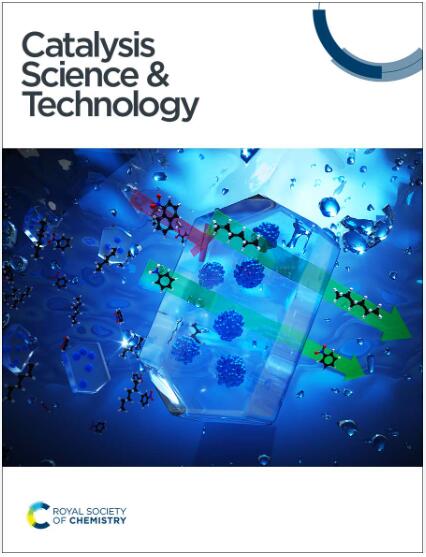Illustrating the surface chemistry of nitrogen oxides (NOx) adsorbed on rutile TiO2 (110) with the aid of STM and AIMD simulation†
IF 4.4
3区 化学
Q2 CHEMISTRY, PHYSICAL
引用次数: 0
Abstract
The family of nitrogen oxides such as NO, NO2, and N2O is considered as major anthropogenic environmental pollutants. Understanding the chemical interaction between adsorbed NOx molecules and the rutile TiO2 surface is important for environmental NOx reduction. In this work, we have derived the adsorption mechanism of nitrogen oxide (NOx) molecules on the rutile TiO2 (110) surfaces by using density functional theory (DFT)-based computations. The most suitable adsorption sites for the nitrogen oxide molecules on the TiO2 (110) surfaces are identified from the adsorption energetics. The complete charge flow process is understood for various NOx adsorbed on the surface. The variation in the adsorption mechanism of NO, NO2, and N2O molecules was explored. Ab Initio Molecular Dynamics (AIMD) simulations are performed to study the stability of NOx-adsorbed TiO2 surfaces. Further insights on the ensuing modifications of the TiO2 (110) surfaces, as well as their structural and thermodynamic stability, are derived. The Scanning Tunneling Microscope (STM) images of the rutile TiO2 (110) surfaces and with the adsorbents are simulated for the first time, which helps to find the surface morphology of NOx adsorbed on the TiO2 surface. The influence of individual constituents of the adsorbed molecules and the surface is explored by analyzing the intricate features of their electronic structures. The present work provides guidelines exploring the interactions of NOx pollutants adsorbed on rutile TiO2 (110) surfaces.

求助全文
约1分钟内获得全文
求助全文
来源期刊

Catalysis Science & Technology
CHEMISTRY, PHYSICAL-
CiteScore
8.70
自引率
6.00%
发文量
587
审稿时长
1.5 months
期刊介绍:
A multidisciplinary journal focusing on cutting edge research across all fundamental science and technological aspects of catalysis.
Editor-in-chief: Bert Weckhuysen
Impact factor: 5.0
Time to first decision (peer reviewed only): 31 days
 求助内容:
求助内容: 应助结果提醒方式:
应助结果提醒方式:


